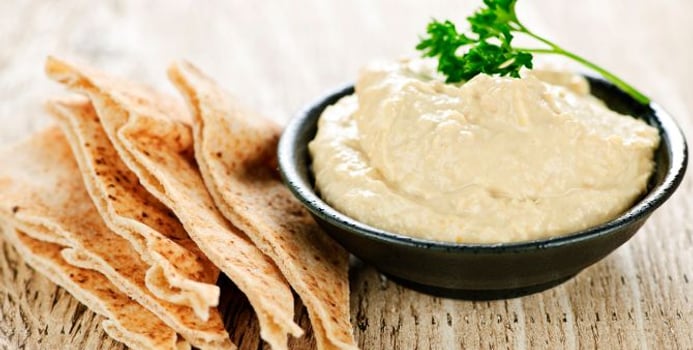Garbanzo beans are a versatile and tasty legume. They can be tossed into salads, roasted, stirred into stews and mashed into a tasty, Mediterranean dip. But these tiny legumes are not only delicious, they also offer a lot of nutritional value. If you don't already have garbanzo beans as a staple in your pantry, after reading the following nutritional information, you will most likely want to.
Protein
Garbanzo beans are a great source of dietary protein. Vegetarians would do well to add garbanzo beans to their diets. When paired with whole grains, garbanzo beans provide a source of protein comparable to that of meat or dairy products, without the worry of saturated fat or cholesterol. One cup of garbanzo beans supplies roughly 27 percent of daily protein requirements.
Fiber
Garbanzo beans, like other legumes, are rich in dietary fiber. Garbanzos contain both soluble and insoluble fiber. Each type of fiber works in different ways to keep the body in healthy, working order. Soluble fiber works in the digestive tract to move excess cholesterol out of the body. Insoluble fiber helps to prevent constipation and other digestive disorders. One cup of garbanzo beans supplies almost half of the recommended daily allowance of dietary fiber.
Manganese
Garbanzo beans contain significant amounts of the trace mineral manganese. Manganese plays an important role in energy production. It's also an important component in the body's antioxidant activity.
Folate
Garbanzo beans are also a good source of folate. This nutrient is vital for women of childbearing years. Consuming adequate levels of folate prior to pregnancy can prevent certain birth defects, such as spina bifida. One cup of garbanzo beans contains 70 percent of the RDA for non-pregnant adults.
Iron
Garbanzos beans are a good source of iron. Iron is important for energy production. Deficiencies often result in fatigue. Iron is especially important to menstruating women, as significant amounts of the mineral can be lost due to heavy periods.
Selection
Garbanzo beans can be purchased dried or canned. Look for whole, uncracked beans that are free from moisture, when purchasing dried garbanzos. Canned beans are a convenient way to purchase garbanzos. Unlike vegetables, garbanzo bean's nutritional components hold up well to the canning process. Their protein and fiber content are only lowered slightly when canned. However, canned garbanzos do have significantly lower levels of folate than the dried beans. The canning process can deplete folate levels as much as 45 percent.
Storage
Dried garbanzo beans are best stored in an airtight container. Place the container in a cool, dry place, away from sunlight, and they will keep for well up to a year. Once cooked, garbanzo beans may be placed in a container and stored in the refrigerator for 3 or 4 days.
Preparation
To lower their sodium content, drain and rinse canned garbanzos before use. Dried beans should be soaked prior to use. This is simple to do. Just place the garbanzo beans in a container of water and soak overnight.



